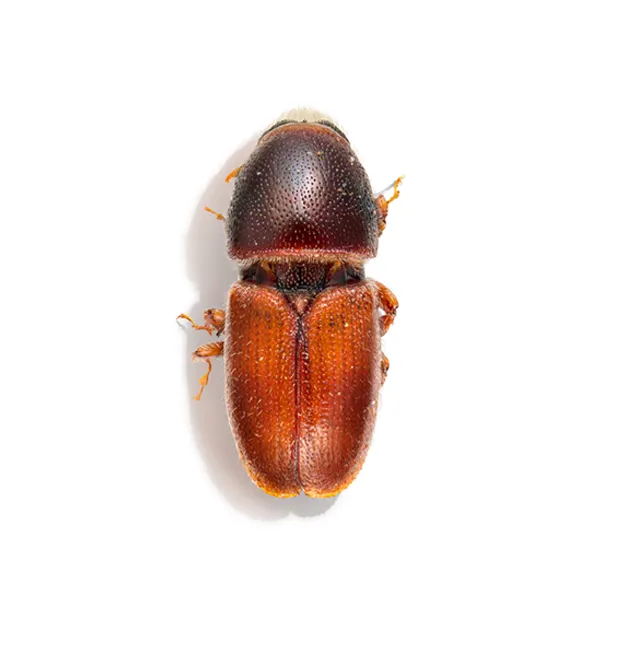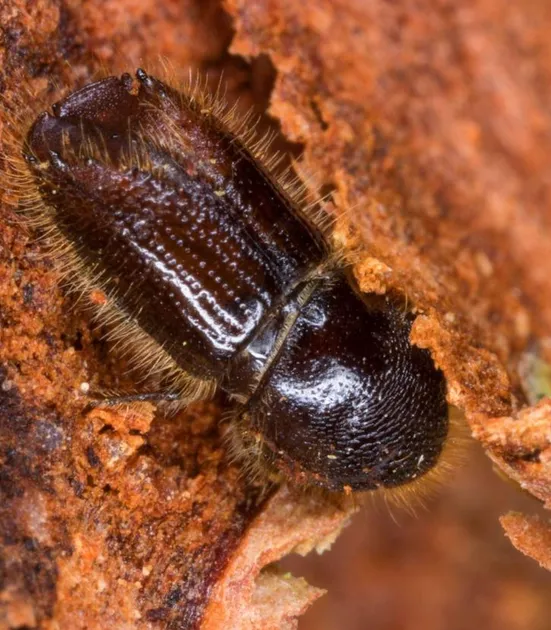Bark beetle is a pest species that creates galleries under the trunks and branches of trees, leading to decay and drying of the produce. This species mainly causes damage to fruits such as cherries, apples, pears, and peaches. It is also known to damage hazelnut, chestnut, and apricot trees.
Bark beetle causes damage that typically hinders the formation of new fruits. Due to its impact on products, especially those intended for export, it leads to significant economic losses. Therefore, combating this beetle species is essential. Effective methods are available for managing its population, which are crucial for population control and monitoring.
Combating Bark Beetle in Cherry Trees
The bark beetle is known for the damage it causes to fruits. It has a short and stocky body, a small cylindrical shape, and is dark in color. These beetles live within the galleries they create and emerge from their winter shelters in March to mate. Female beetles lay their eggs in the galleries they dig.
This beetle species reproduces once a year and typically exhibits irregular flight patterns, which vary depending on the temperature.
The damage caused by the bark beetle includes creating galleries in the woody parts of trees and branches, disrupting the nutritional flow to the branches, and causing them to dry out. Affected trees exhibit galleries filled with wood dust.
This pest generally attacks weakened trees, though it occasionally targets healthy ones as well. The damage caused to weakened branches can result in their breaking, even in the wind. Due to the harm it inflicts on trees and branches, the yield of future fruits decreases. Trees attacked by this beetle may dry out within 2-3 years.

The fruits affected by this pest include cherries, pears, apples, and peaches, and it can also cause damage to hazelnut, almond, and apricot trees.
Given the damage it causes to export products, it results in significant economic losses. Additionally, the harm it causes to branches prevents the formation of new fruits. For these reasons, combating this pest is of great importance.
What are the Methods Used in the Fight Against the Printer Beetle?
There are many methods available to combat this beetle species. However, the key is to take general preventive measures and control the population before trees or fruits are harmed.
The methods for fighting this pest include:
- Cultural Control: Cultural measures are among the most effective methods. Since this pest prefers weakened trees, pruning, fertilizing, and watering trees are essential. Additionally, branches that have completely dried should be pruned and destroyed after the pruning process.
- Biological Control: This method uses the natural enemies of the pest species.
- Chemical Control: Chemical control is not recommended for combating this pest species. This is because the beetles only emerge from their galleries to mate and lay eggs, and these flights occur over a long period and in an irregular manner. This makes chemical control ineffective.
The most effective method recommended for combating this species is mass destruction using traps. Biotechnical control is one of the most effective methods in mass capture.

Insect Traps
Bark beetle traps are frequently recommended for combating this species. Pheromone traps are used for mass capture and destruction.
Pheromone traps mimic the pheromones released by female beetles, attracting male beetles to the trap for destruction.
Features of pheromone traps include:
- Pheromone traps are an important method for population control and monitoring.
- These traps aim to reduce the population of male beetles.
- The traps are species-specific, ensuring that beneficial organisms are not harmed.
- They significantly reduce the need for chemical use, protecting both the environment and human health.
- Limiting chemical use prevents additional costs for producers.
- The traps are easy to install and have low costs.
- Pheromone traps should be hung approximately 1.5 to 2 meters above the ground. For optimal results, it is recommended to place them in areas sheltered from the wind.
The placement of these traps is crucial. The general placement pattern should be in the flight direction of the beetles.
Pheromone traps should be checked and maintained at regular intervals. It is also recommended to monitor the pheromone capsules inside the trap, ensuring the attractants are replenished as needed for long-term use.
For more information on bark beetles, their damage, and control methods, you can contact Kapar Organik.
